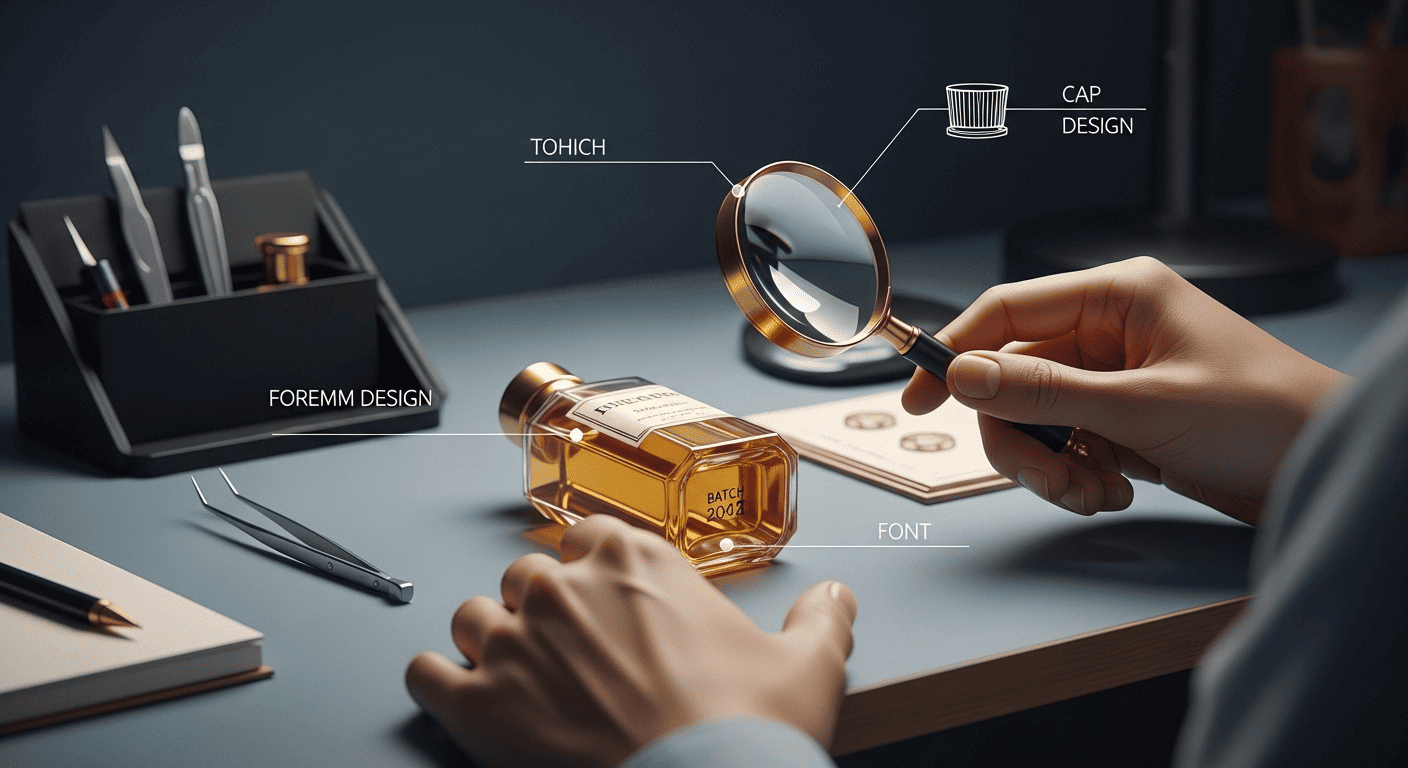Embarking on a quest for vintage fragrances is much like olfactory archaeology, a deep dive into the archives of scent to unearth a true original. The ultimate discovery is a pre-reformulation bottle, a liquid echo from an era before regulations and modernizations scrubbed fragrances of their original complexity. This endeavor is driven by a desire to experience a perfume not as a replica, but as the authentic, potent vision conceived by its creator.
The magnetic pull of these historical fragrances comes from a profound textural difference when compared to their contemporary versions. The original perfumes were composed using a richer, more daring palette of materials, including complex animalic notes and deep, earthy mosses that are now heavily controlled. These foundational components gave the original creations an unparalleled depth and character, while also defining their powerful ballistic scent properties and making them truly unforgettable.
This pursuit is not without its perils, as the path is littered with challenges ranging from the natural degradation of top notes to the deliberate deception of sophisticated forgeries. To successfully acquire a genuine piece of history, one must adopt a multi-disciplinary approach, combining the sharp eye of an appraiser with the deep knowledge of a scent historian. It is a meticulous process of verification, aimed at securing a fragrance with a richness and soul that is often absent in the streamlined chemistry of modern perfumery.
The Hunting Grounds: Mapping Your Search
The first step in any treasure hunt is knowing where to look, and the map for vintage perfumes has both well-trodden paths and hidden corners. The most accessible starting points are online marketplaces like eBay, which serve as vast, digital flea markets where treasures can surface daily. However, these platforms are also rife with counterfeits, demanding a high level of buyer vigilance and skepticism. A discerning eye is your most critical tool in these sprawling digital bazaars.
For a more curated, albeit often more expensive, experience, collectors should turn to trusted vintage purveyors and specialized online boutiques. These sellers have already done much of the legwork, staking their reputations on the authenticity and quality of their stock. Developing relationships with these experts provides not only a safer purchasing environment but also access to their extensive knowledge and a network of fellow enthusiasts. They are the seasoned guides who know the terrain intimately.
Beyond the digital realm, the physical world still holds immense potential for discovery. Estate sales, antique shops, and local flea markets can be unexpected goldmines, places where forgotten bottles might langu đời on a dusty shelf for decades. These real-world hunts require patience and a bit of luck, but the reward of uncovering a pristine, boxed classic for a pittance is a thrill that online shopping cannot match.
Visual Clues: Reading the Artifact
Before you ever assess the scent, the first layer of verification comes from a meticulous examination of the bottle and its packaging. These physical elements are your primary evidence, offering numerous clues about the item’s age and authenticity. An original box, for instance, is a strong positive indicator, but its condition, font, and cellophane wrapping must be scrutinized for anachronisms. Counterfeiters often make subtle mistakes in typography or use modern plastics that feel different from older materials.
The bottle itself is a rich source of information, a physical manuscript waiting to be read. Pay close attention to the quality of the glass, the style of the cap, and the method used for labeling. Vintage bottles often have thicker glass, ground-glass stoppers, or unique cap materials (like Bakelite) that were phased out in later productions. The label should be examined for print quality, correct spelling, and alignment, as these are details where forgeries often fall short.
Ultimately, you are looking for a cohesive story, where every element aligns with the known history of the fragrance during a specific era. Inconsistencies are red flags that demand further investigation. When examining a potential find, a mental checklist can be invaluable:
- The Box: Check for period-correct logos, fonts, and addresses. The texture and color of the cardboard itself can also be an indicator of age.
- The Bottle: Look for mold lines, embossed markings on the base, and a cap style that matches the production period.
- The Label: Verify the font, positioning, and material (paper, painted, or etched) against photos of known authentic examples.
Olfactory Forensics: The Scent of Time
If the visual inspection raises no alarms, the ultimate test is the scent itself. This is where olfactory forensics comes into play, but it requires a managed set of expectations. The most volatile top notes—often the bright, sparkling citruses—are the first casualties of time. Do not be discouraged if a vintage perfume’s opening feels dull, oily, or even slightly “off,” as this is a common and natural part of the aging process.
The real proof resides in the heart and, most importantly, the base of the fragrance. As the volatile top notes fade, the rich, complex, and well-preserved core of the perfume should emerge. It is here that you will encounter the ghosts of restricted ingredients that define the vintage experience. The presence of real, unrestricted oakmoss or the creamy depth of nitro-musks offers a textural richness that is profoundly different from their modern replacements. This is the undeniable signature of a true pre-reformulation classic.
The scent’s behavior on the skin is the final piece of evidence. Vintage formulations, with their heavy, resinous, and animalic base notes, often possess extraordinary longevity, lingering for many hours or even days. The evolution, or “drydown,” should be a slow, complex journey, revealing different facets over time. A fragrance that is linear, fades quickly, or smells of harsh, cheap chemicals is almost certainly a modern fake.
The Final Verification: Decoding the Provenance
For many fragrances produced in the last few-to-several decades, the most definitive piece of evidence is the batch code. This short alphanumeric string, usually printed or etched on the bottle’s base or back, is the bottle’s birth certificate. It links the product to a specific production run, and with a bit of research, can be used to determine the exact year, and sometimes even the month, of its manufacture. This code is your key to unlocking its place in history.
The process of deciphering the code involves cross-referencing it with online databases and collector forums. Enthusiast communities have compiled extensive resources for major brands, allowing you to input a batch code and instantly see its production date. This allows you to definitively confirm whether the bottle predates a known, significant reformulation, transforming your assessment from an educated guess into a verifiable fact. A bottle without a batch code, or with one that doesn’t match the bottle’s other physical characteristics, should be treated with extreme suspicion.
This final step is crucial because it provides objective, data-driven proof that complements your subjective olfactory assessment. It is the point where the art of connoisseurship meets the science of verification. By combining what your nose tells you with what the batch code proves, you can build an unshakeable case for your vintage treasure’s authenticity.
Common Questions for the Vintage Hunter
A reformulation is a significant change made to a perfume’s original formula. This happens for various reasons, most commonly to comply with new safety regulations from bodies like IFRA that restrict or ban certain ingredients, or to reduce costs by substituting expensive natural materials with cheaper synthetics. These changes can dramatically alter the scent and performance of the original fragrance.
Not necessarily. “Better” is subjective. Vintage perfumes are often richer, deeper, and more complex due to their original ingredients. However, they can also be more challenging to wear and may contain allergens. Modern versions are often brighter, safer, and more socially acceptable, but may lack the character of the original.
The three enemies of any perfume are heat, light, and oxygen. To preserve a vintage find, you must store it in a cool, dark place, preferably in its original box to block out all light. A closet or a drawer in a temperature-stable room is ideal. Avoid storing bottles in a bathroom, where heat and humidity fluctuations will rapidly degrade the fragile aromatic molecules.

